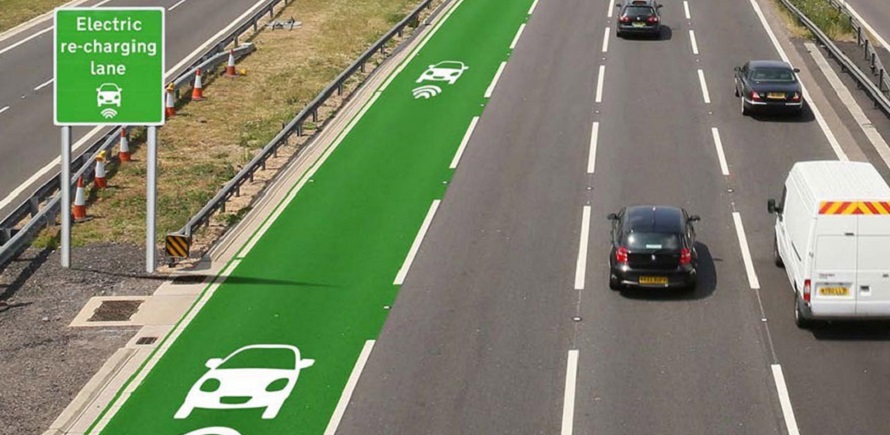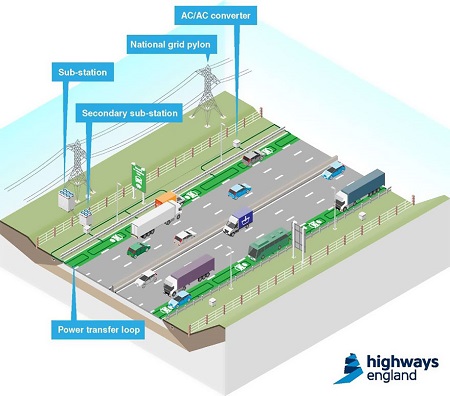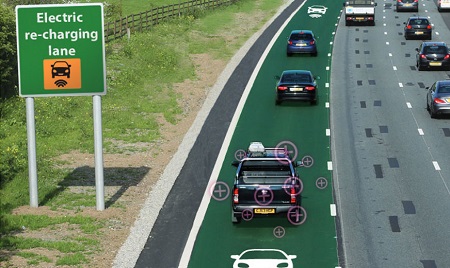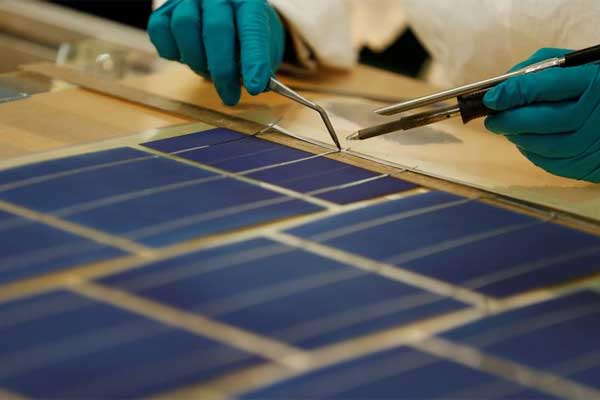The British government is getting ready to test out new road technology that would allow electric cars to charge as they drive. The goal is to help drivers with electric and hybrid cars avoid frequent stops to recharge their vehicles.
[Ivana Kottasova and Alanna Petroff/CNNTech]
The system would use electric cables installed under roads to generate electromagnetic fields and send power to a gadget under a car. While it could potentially run on renewable energy (and maybe even be combined with something like a Solar Roadway), the government is still working out the details.
[Adele Peters/FastCoExist]
“Vehicle technologies are advancing at an ever increasing pace and we’re committed to supporting the growth of ultra-low emissions vehicles on England’s motorways and major A roads,” wrote Highways England chief highways engineer, Mike Wilson. “The off-road trials of wireless power technology will help to create a more sustainable road network for England and open up new opportunities for businesses that transport goods across the country.”
[Dainius/BoredPanda]
Wireless charging technology already has been proven to work, both in phones and buses. South Korea has a 12-kilometer road that charge buses as they drive. The wireless technology that vehicles use is called SMFIR—it stands for shaped magnetic field in resonance—which involves the transfer of electric charge via magnetic fields that are generated and captured by coils installed in the road and car respectively.
[Akshat Rathi/Quartz Reporter]
Above image: Electric cables are buried under the road to generate electromagnetic fields which are caught by a coil inside the vehicle and converted into electricity.
Credit: Highways England
















Comments